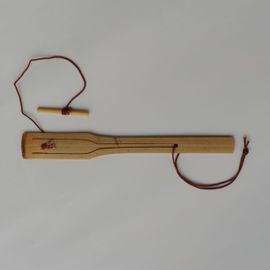Balinese Genggong, A Depiction Of Strong Tradition Through Music
Balinese Genggong, A Depiction Of Strong Tradition Through Music.
Bali has a strong tradition. Their culture has been passed down from generation to generation. One of the media to maintain tradition is art. In Banjar Sesetan, Abiansemal, Badung tradition is passed down through sound art or music. The name of the instrument is Genggong.
Genggong is made from thin palm tree trunks, approximately twenty centimeters. At the end of this musical instrument, there’s a thread and a small lever to tighten and loosen the string.
Genggong isn’t played by being blown. This traditional music instrument sounds through a vibration echoed in our mouth. Now, to produce an aesthetic sound, you need to pull and arrange the length of the thread. Unique, right? Physically, vibration does produce sound waves. A tightly stretched thread will make a noise. The length and the short length of the thread affect the sound output.
Palm tree trunks used must meet the requirements to make a perfect sound. Old, dried stems are ready for further processing into musical instruments. The shape is simple, but it sounds like a vibrational space. The dried stem is cut 20 inches long and 2 inches wide. Only the outer shaft is used because the character of the inner stem is too soft. There is also an important part of the traditional musical instrument of the Genggong, which is the pelayah. Pelayah is located in the middle of the Genggong bar, approximately 12 centimeters long. Well, this part serves as a vibration.
After being cut and mashed, the tip of the palm blade is given a hole to link the thread. Then, a lever with a length of 5 cm is attached to the other end of the thread to make the yarn easy to be pulled and stretched. The shape is indeed quite simple.
It’s also easy to play Genggong. Place the instrument in your mouth, and pull the string tightly. Then, the vibrations from the yarn and the Genggong element will produce a sound. The sound can be controlled through the direction of the thread you pull.
At the beginning of its appearance, Genggong was only played individually. In the past, Genggong was a farmer's entertainment when they were tired of processing their rice fields. During a break, a farmer made a sound arrangement from Genggong. With this historical background, the Balinese people consider the traditional musical instrument of Genggong as a medium of art in balih-balihan (entertainment) category.
Currently, Genggong is played collectively with other traditional Balinese musical instruments. In art events, you can enjoy the melody of this musical instrument along with the flute, ceng-ceng, kenong, gong and many more.



















